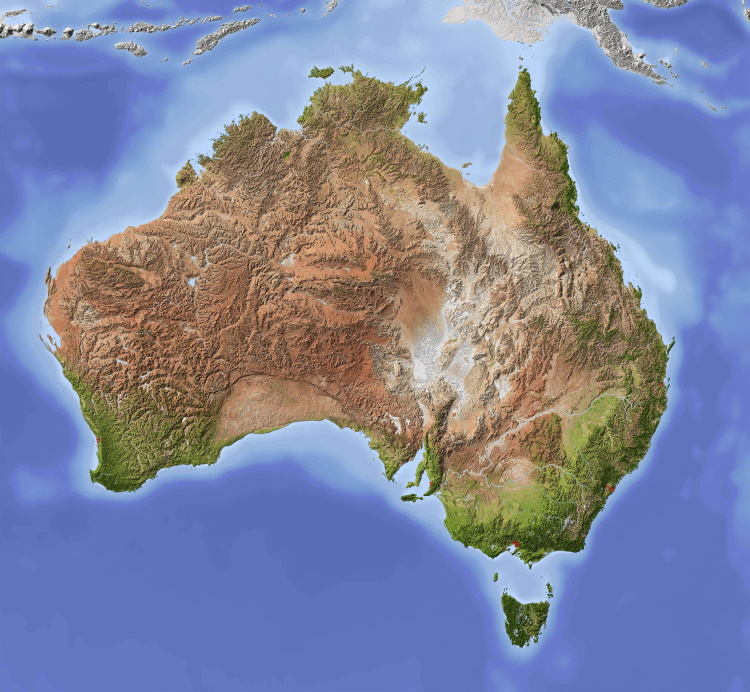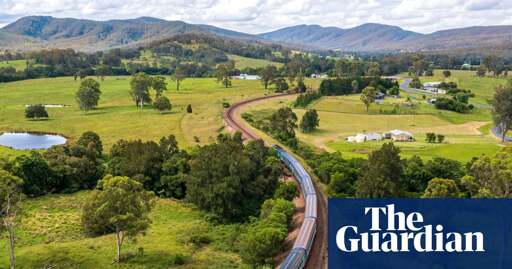The first leg should be short and intrastate. The first step is building any high speed rail at all.
The most important thing is to keep building. Once you stop the knowledge is gone.
The most important thing is to keep building. Once you stop the knowledge is gone
Hear, hear.
Surely Sydney-Canberra would be better for a prestige generation-defining nation-building project than what any other country would call a regional line. It’d actually make sense as a federal project, in a way that a purely intrastate line in NSW would not, it would all but kill a busy aviation corridor that only exists because the existing link is pathetically slow, and (especially if you terminate it at a new station in/under central Canberra with a through connection) would form the start of a link to Melbourne, joining Australia’s two most populous cities via the capital.
That’s if you think of these things as once-in-a-generation Snowy Mountains-style prestige projects that the country can only do one of at once. If we’re building high-speed rail as a utility rather than just to be able to say that we’ve joined the HSR big boys’ club just like Algeria and Indonesia, we should parallelise. Establish national standards for high-speed rail, in a way that is classic-compatible, so that trains can run slowly on legacy lines (once they’re relatively cheaply electrified, at least) until faster lines replace them, electrify lines and pick the low-hanging fruit of the particularly slow, winding sections. Build a showcase HSR line to Canberra whilst quietly upgrading the rest of the network. Get Melbourne-Sydney down to 8 hours and increase train frequency from 2 a day to 4, while upgrading the trains with modern amenities like fast WiFi and power sockets do that the time isn’t dead time. Then, once Canberra HSR is up and connecting Sydney and Canberra within an hour, punch through and connect to the legacy Melbourne line, bringing the time down further, and then gradually replace legacy segments with high-speed bypasses.
Quiet small upgrades are good. You do a couple of them and your rail network becomes a lot more usable.
Establish national standards for high-speed rail, in a way that is classic-compatible, so that trains can run slowly on legacy lines
I don’t think this is as useful or easy to do as it might seem, because track gauge/electrification standards are all over the place and sharing tracks with normal trains makes your HSR unreliable and constrained in terms of scheduling. Even normal rail lines barely share track because you don’t want issues from one line cascading onto another
The sharing is better than nothing. For the first/last mile of accessing central stations, that is the norm in countries like Germany, and a Sydney-Melbourne Shinkansen turning into a XPT somewhere around Wagga Wagga where it rejoins the legacy line is also doable, and better than the status quo. And gauge seems to be a settled issue everywhere except for Queensland north of Brisbane and the Victorian suburban/regional networks, whose interstate-reaching routes have all been regauged.
Trickier details would be electrification (you’d want 25kV AC to deliver enough power to accelerate fast, but in Melbourne/Sydney, you may need to either make do with lower legacy voltages, necessitating multi-system capabilities as in Europe, or have a dedicated road).
Give this person the job. Well thought out response.
Establish national standards for high-speed rail, in a way that is classic-compatible, so that trains can run slowly on legacy lines
Queensland doesn’t run standard gauge, so that’s extra hard up here.
It’s so frustrating to me that even relatively new projects like Cross-River Rail didn’t build dual-gauge so they could be compatible with a future high speed project.
Neither did Japan until the Shinkansen. (In fact, aren’t both Cape-gauge?)
Any interstate HSR link to Brisbane would be standard gauge, as the XPT is. An intrastate link going north towards Cairns/Townsville may be classic-compatible Cape gauge if done incrementally, though given that one would typically break one’s journey in Brisbane, this is not catastrophic. Unless suddenly funds become available to build a new Shinkansen-style network from scratch, in which case standard-gauge would be the way to go.
Maybe they could get the regular train running between Casino and Brisbane first. LIKE IT FUCKING USED TO.
In Melbourne, the same premier who got us the F1 also removed the train line to the F1… so we could build a casino.
It sounds a logical start point, the central coast and Newcastle have a large population base to work with and it’s not that far apart. The sheer amount of tunnel for that route compared to what one would expect with a corridor through more open country is a downside but you might as well start somewhere rather than talk about it for a few more decades.
Yeah I’m not sure how I feel about the expensive tunnel + bridges route. Maybe getting that out of the way early could make it easier to keep going, giving a sort of “the hard part has already been done” argument in favour of continuing. On the other hand, the high pricetag could give opponents something to point at to say “stop this here”.
I’d imagine it’s the best bang for buck. Relatively short distance and large number of commuters. If they can prove the concept there it will be easier to get support for going further.
I do wonder about that “relatively short distance” bit. You’re definitely right about the large number of commuters, but considering 60% of it is going to be tunnels, and a further 20% via bridges and viaducts, that seems likely to be much more expensive per kilometre than some other routes might be. Someone else suggested Sydney to Canberra, which would have added prestige factor and be connecting different states/territories, demonstrating more clearly the need for federal involvement. I imagine it would have a much lower per-kilometre cost, too. Starting with Sydney to Wollongong (on the way to Canberra) might achieve a fairly similar level of demand and time savings to Newy.
Good points. I guess an initial options investigation would look at the feasibility of existing routes. As I understand it, we’ve paid consultants to do one of those every other year since the 80s, someone should look it up I guess.
Never let politicians run a railway system.
I would suggest quite the opposite. Privatised transportation systems have proven themselves to be absolute abject failures. The UK is currently moving back towards nationalised railway after decades of failure under privatisation. My city of Brisbane, Australia has one private railway, and it’s extortionately expensive at 45 times the price of our regular public transport…and they have literally not allowed any other public transport along that route to be run.
Private businesses necessarily need to make a profit. But public transport is a public good (in the informal sense), and it’s practically an economic public good. It shouldn’t be run for profit, but for the benefit of society. That means sometimes being unprofitable.
Oh,don’t get me wrong, I am all against privatized railway systems and literally fighting against that where I currently live. (Currently living jn Europe and the difference is very obvious) BUT: That doesn’t mean letting politicians plan things is a good idea either.
Why? Because then you get the worst of both worlds - because their interested is not the optimal system for everyone but the optimal result for them. So you get stops, expensive detours or “solutions” that do not benefit 98% of the users but are a nice gift/benefit for their constituents in their small electoral districts. (Germany is a very good example for that. They have a lot of high speed lines that could be 30-40% faster if the trains would not “need” to stop in bumfucknowhere towns and have literally build expensive tunnels for billions that are now not used for most connections as they need the extra stop or their semi private railway system would need to repay subsidies)
The same can be seen in the US, etc.
Railway systems need to be planned by a very large scale - and by people who have the optimal solution for the railway system and the population in mind,not local interests.








